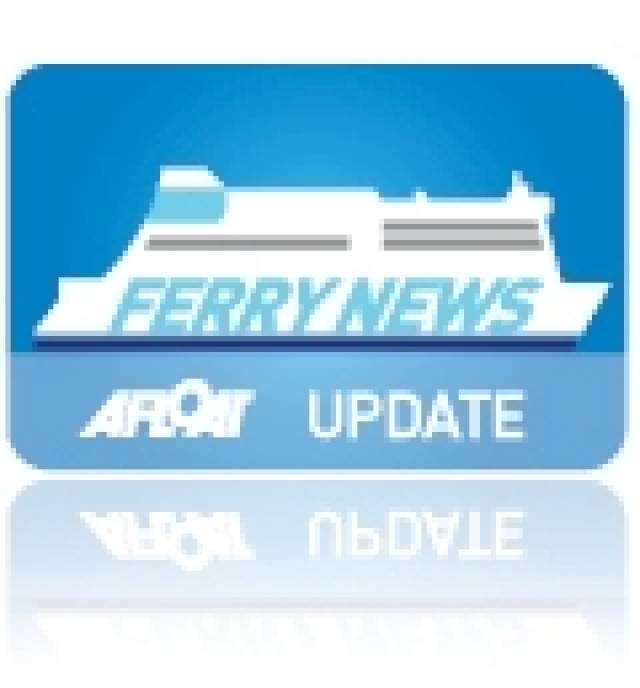#StenaSuperfastX – Amid much speculation the deployment of Stena Superfast X to Dublin-Holyhead route in early 2015 as previously reported on Afloat.ie has been finally confirmed by Stena Line.
The 29,800 tonnes ropax ferry will bring increased capacity as she will replace the route's existing smaller Stena Nordica which currently serves alongside Stena Adventurer.
Stena Superfast X is a sister ship of Stena Superfast VII and VIII that currently operate on the Irish Sea on the Belfast-Cairnryan route.
The introduction of Stena Superfast X as the new second ship on the Dublin-Holyhead service will see the vessel providing capacity for up to 1,200 passengers and almost 2 kms of lane space to accommodate a mix of car and freight traffic.
Ian Davies, Stena Line's Route Manager (Irish Sea South) said: "Providing additional capacity and facilities to expand our Dublin- Holyhead route is an important strategic development for Stena Line on the Irish Sea at this time. Our freight and travel customers will now be able to benefit from an enhanced service on this key trade and tourism gateway at a time when commercial and leisure traffic between Ireland and Britain are showing really encouraging signs of future growth.
Ian added: "By introducing a much larger ship onto the route, we are demonstrating our confidence and commitment to a trade and tourism gateway which will play a key part in helping to drive forward the economies on both sides of the Irish Sea. In the last 5 years alone Stena Line has invested over £250m across its Irish Sea operations and we are confident that the improving economic climate in Ireland and Britain will show that this significant resource commitment has been extremely well timed. As the major tourism gateway into Ireland it is important that Dublin benefits from the best possible transport links. We are looking forward to our enhanced passenger service into Dublin in 2015 playing its part in helping to drive up visitor numbers next year and in the years ahead."
Superfast X as previously reported is being fully modified by McGregor, who are converting the vessel to increase vehicle capacity understood to be closer to her original configuration before she takes up her position on the Dublin-Holyhead service.
The vessel will have a range of facilities including dedicated passenger and freight driver lounges, Barista Coffee House, Met Bar and Grill, a retail shopping outlet and other areas for passengers to relax and enjoy including a premium lounge.






























































